We stopped by Craggaunowen, a “living past experience,” en route from Limerick to Ennis. Indeed, it was a wonderful experience made unique by our interactions with the actor-guides.
A medieval expert and consultant for Sotheby’s name dJohn Hunt bought 50 acres of land here and restored the property’s castle with the goal of recreating what it might have been on the bog in the Bronze Age. Visitors walk along the path to see this castle, along with awesome recreations of a Crannog, a Round Fort, its Souterrain, and more.

Inside the castle are examples of furniture, decor, and textiles from ancient Ireland. There were a few turtle shells on the wall as well, which the guide said might have been used as bowls. There were no turtles in Ireland so they would have had to come by trade or travel and were more of a status symbol than anything. She was a spinner and showed us the technique to turn wool into thread and shared some of the plants and materials used to dye the wool different colors. I didn’t realize onion skins could be used to create a lovely golden color! Just a few examples of other plants used for color include lavender, nettle, fern, and thyme, though they used many more.
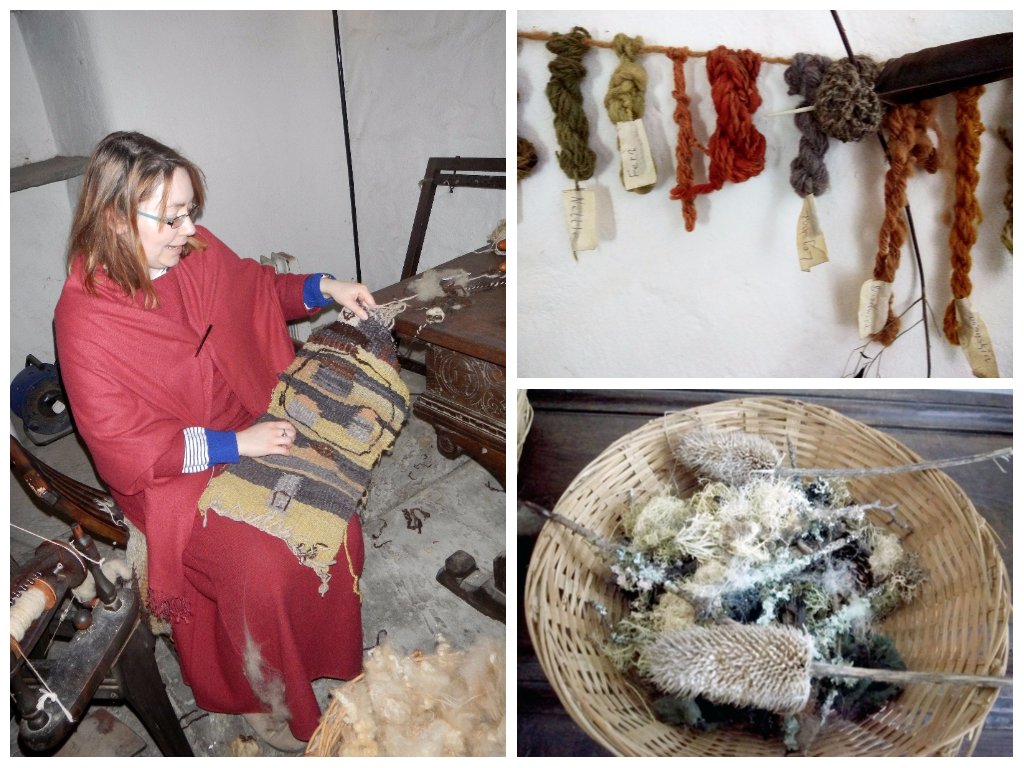
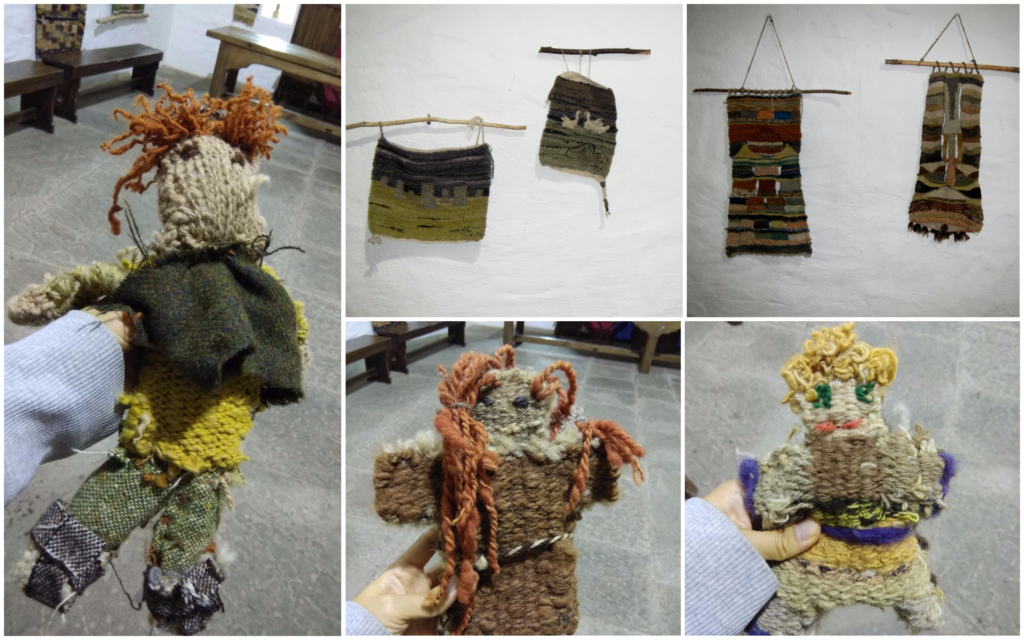
They recreated a crannog, or island made of brushwood/log on a stone base. For protection, the crannog was only reachable by boat or causeway (man-made, or naturally occurring semi-submerged stones that only those living there knew of). On the crannog we met a guide who told us about life as far back as 1000 BC in the Iron Age.
There were two buildings on the crannog, one was living quarters for the chieftain, and the other was for communal activities. They’d settle disputes there, such as the penalty for cutting down a tree without permission. Yes, people needed permission to cut a tree down, and some trees were more valued than others. Oak, for example, was highly valued and had the highest penalty for an illegal felling. But a blacksmith, who has a high status (comparable to the chieftain) might find some leniency since oak is needed for a new anvil; oak’s a hard wood that gets harder with use over time. Oak is also what they used for sawblades back in the day, able to cut through other softer woods. A penalty for cutting an oak might be to pay a cow to the community. With leniency, the penalty might be 1/2 a cow rather than a full cow, or perhaps 4 pigs, or 4 sheep, or whatever the blacksmith had available.
If a more serious crime was committed, such as murder, there was a more serious punishment. For example, if a man murdered another for being annoying (this was the real example) the murderer would then have to support the family left behind. He might be given a choice to provide them with a cow a year, or 1/2 of every hunt, until the eldest child could go out and hunt for his family.
Hunting was serious business back then and hunting for a wild boar was a very dangerous task. A community would send out its bravest and most skilled warriors for a hunt and needed a group of at least 8-10. It was not uncommon for the boar to kill a man in a frenzied stampede. They are enormous, and running full speed, could easily knock a man and trample him. Look at the size of the big guy snoring in the middle of the video below!
There were also bears in ancient Ireland! Somewhat recently, two children named Alice & Gwendolyn found bones of a bear in a cave that date back 10,500 years with marks on the bones that suggest ancient humans scraped/interacted with these them.
Fighting between humans (clan war) was much more strategic and efficient than warfare today. Rather than have the whole of each tribe fight, each would pick their strongest and fiercest warrior to engage in one-on-one combat to the death. The winner would have won for his clan which would then absorb the losing clan. There were many jobs to do, after all.
Our guide also told us about marrying, or as they called it in their day, “hand-fasting,” since it involved the literal (and symbolic) tying of the two participants hands in a clasped position. People could choose to get hand-fasted for one year and one day as a practice to see how they liked it, and renew their vows for another year and a day, or three years and three days, or however long they liked. The marriage ceremony was short, and might be followed by a meal/reception, if you will, of whatever fanciness desired. But they were very very careful about binding themselves to another for eternity, as this included the next life, and all those that followed.
If a woman who bore children in a house, she had equal rights to it and the husband would have to leave and build a new shelter for himself if they split. They mightn’t have called it divorce, but a couple would be separated if they were seen/heard fighting in public. They would be split (divorced) on the spot since the Ancient Irish believed life was too short and should be enjoyed.
Women were considered equals in Celtic societies and were often Druids or Bards themselves. In order to be a fully qualified Bard, one would have to learn ALL the major songs and tales as well as the genealogy of a region’s major chiefs and leaders back 20 generations (wow!).
 They also knew Oghum (usually pronounced “Ohm”—like the sound of the universe—but sometimes pronounced “Og-um” in a few regional dialects), an ancient Irish written language consisting of a midline and marks that cross it. Bards could sign this language to each other by establishing a midline, for example drawing it down the center of their chest/stomach region and then using their fingers to cross/intersect, spelling out words this way.
They also knew Oghum (usually pronounced “Ohm”—like the sound of the universe—but sometimes pronounced “Og-um” in a few regional dialects), an ancient Irish written language consisting of a midline and marks that cross it. Bards could sign this language to each other by establishing a midline, for example drawing it down the center of their chest/stomach region and then using their fingers to cross/intersect, spelling out words this way.

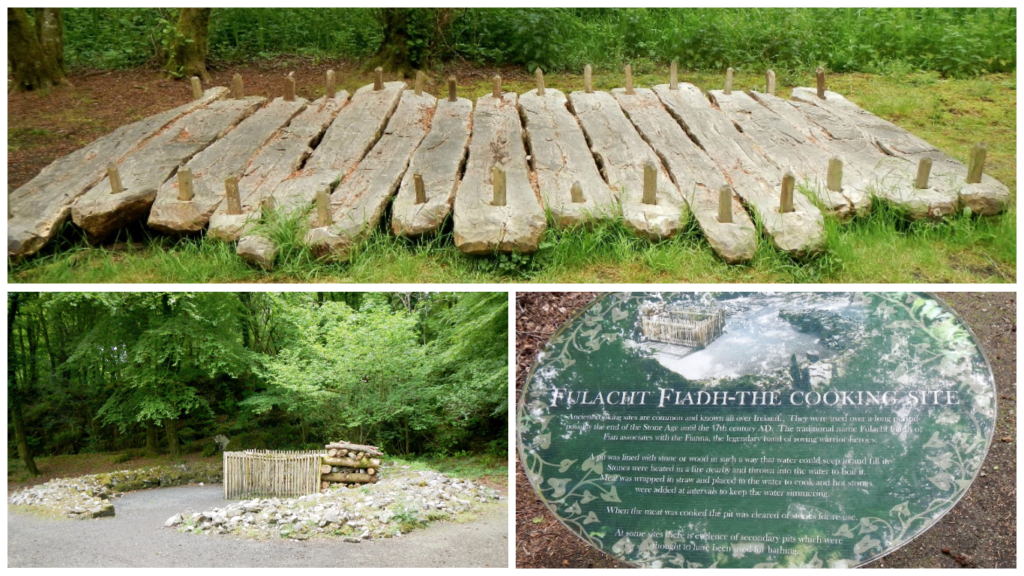
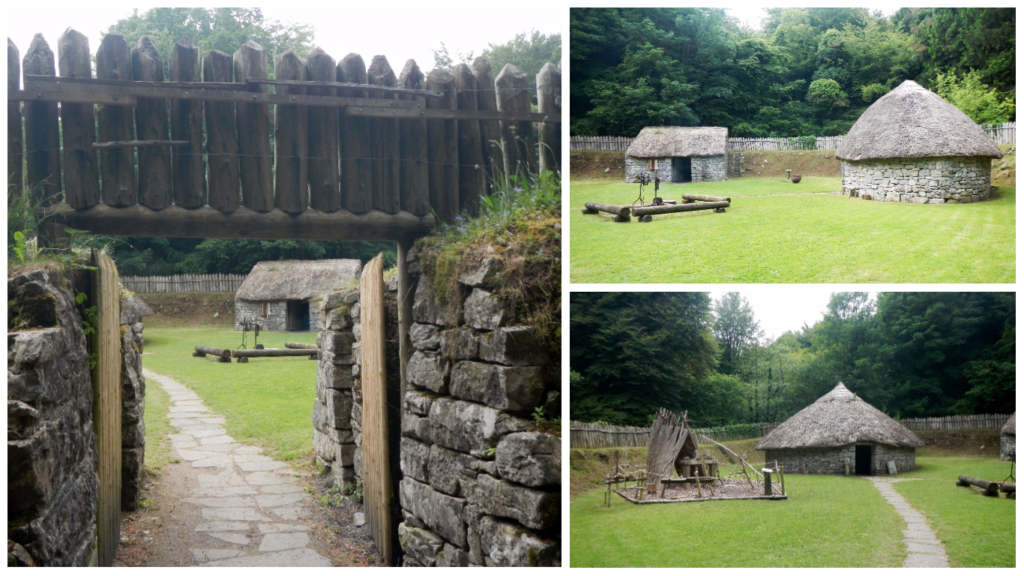
We got to see an example of a Ring Fort, a type of living quarters that might often have a Souterrain, or basement-type area underneath. The Souterrain could serve as storage space for the harvest (it stays a constant 4 degrees C down there, no matter what the outside temperature) as well as an escape route in case of emergency.

The newest part is the Brendan Boat, a boat made using materials and technique available it would have been during the in the Iron Age, in a modern glass enclosure.

Legend has it St. Brendan sailed across the Atlantic with missionaries in the 6th century—pre-Chirstopher Columbus and even pre-viking era! The voyage took 6 years and though no one can prove that he sailed to North America, there are many place names related to St. Brendan that guided later sailors westward.
A mildly crazy and confident historian named Tim Severin made this modern-day Curragh of animal hide, tar, and wood and actually used it to sail across the Atlantic in 1976-77 in order to prove that it would have been possible in the 500s. The crew had to perform an emergency surgery in freezing water after the boat was punctured by an iceberg, but it sailed on and the journey was ultimately successful.
After our fill of history, we enjoyed our time walking the grounds and seeing some of the “easter eggs” Craggaunowen placed for the discerning eye in its green spaces.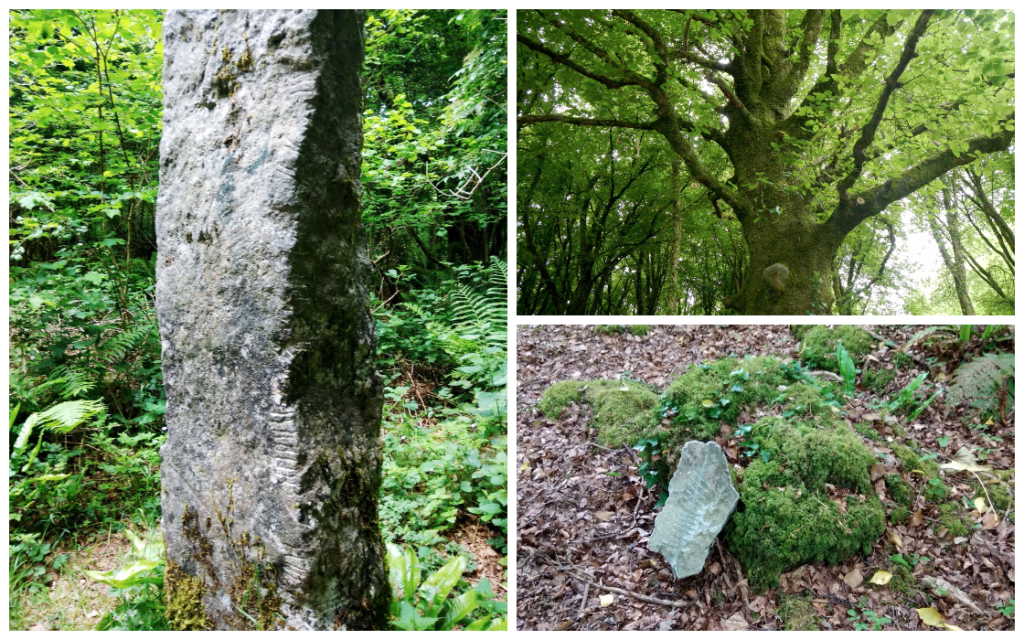
We enjoyed all this in under two hours! I’d say this is a must-stop on any road trip in the vicinity of Limerick city.
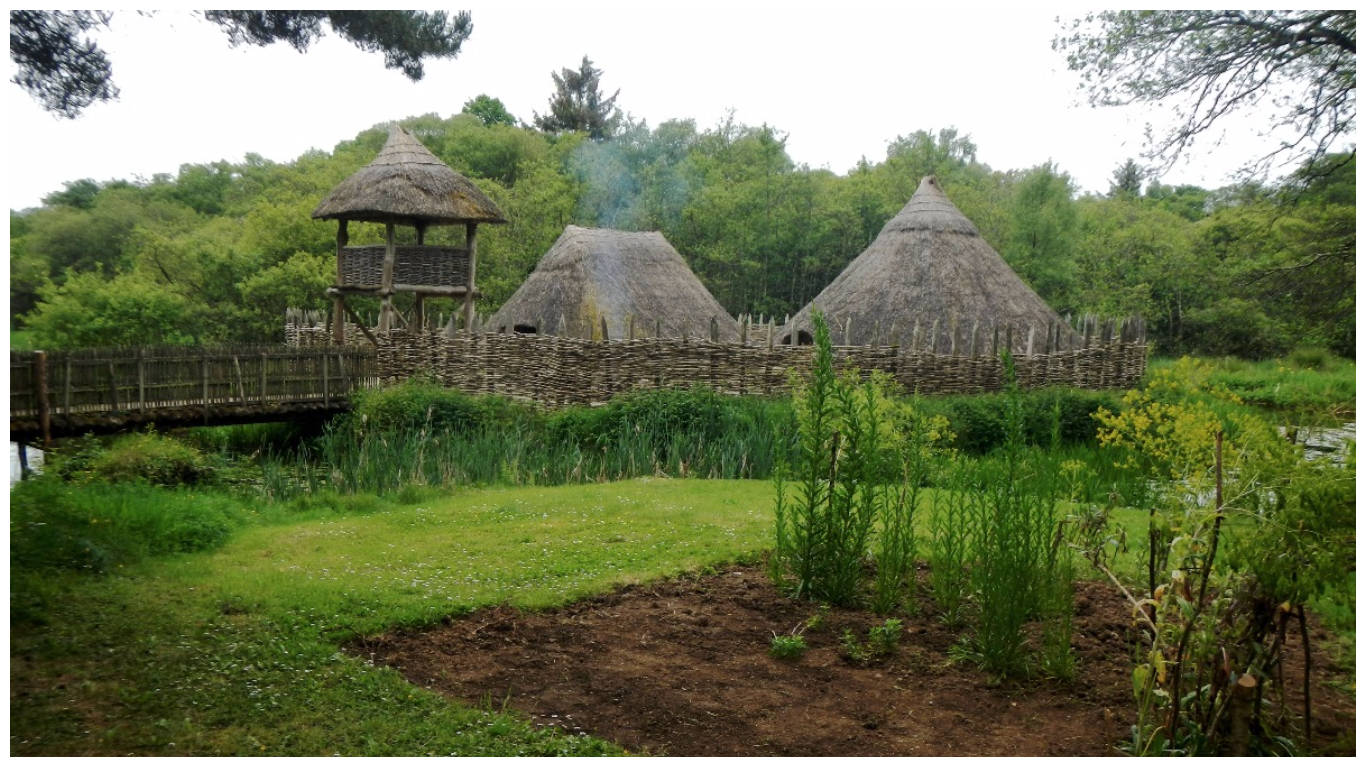
Thoroughly enjoy this type of living history tours! We were at a autumn farm festival last year near home. Several spinning wheels were out and they too, shared about natural dyes and the process from shearing to finished woolen products! Still active processes in use! Exciting!! Jon looked comfy on that hay mattress!
Oh awesome! Yes it’s really cool to learn about the old ways from knowledgeable people who have practiced it (more than just theory!).The hay was quite soft compared to the floor and I see where the expression “hit the hay” comes from =)